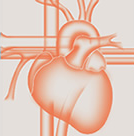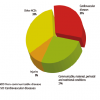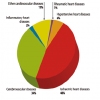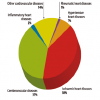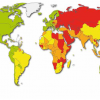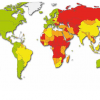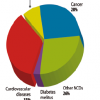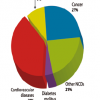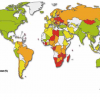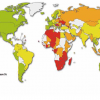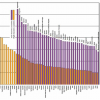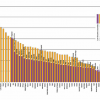Summary
According to the latest available statistics from the World Health Organisation, cardiovascular disease represents an ever-increasing burden on healthcare systems. While the primary prevention of any disease process is the ‘holy grail’, it cannot operate in a vacuum. Interventional therapies including post-interventional secondary care for stable angina, acute myocardial infarction and emerging therapies for stroke, peripheral vascular disease, heart failure and hypertension play an important often understated role. The pragmatic paradigm required to combat cardiovascular disease in the 21st century is one of a joint approach of primary care and effective interventional approaches. This annexe is intended to be a useful resource to illustrate these statistics and relative contribution of these different approaches.
Figures
Figure 1
Distribution of major causes of death worldwide (2008)
Figure 2
Description of CVD deaths in males (2008)
Figure 3
Description of CVD deaths, females (2008)
Figure 4
Global distribution of CVD mortality rates in males (age standardised, per 100 000) [2008 data]
Figure 5
Global distribution of CVD mortality rates in females (age standardised, per 100 000) [2008 data]
Figure 6
Distribution of global NCD by cause of death, both sexes
Figure 7
Distribution of global NCD by cause of death <60 years of age, both sexes. [2008 data]
Figure 8
Distribution of global NCD by cause of death <70 years old of age, both sexes [2008 data]
Figure 9
Global distribution of ischaemic heart disease mortality in males (age standardised, per 100 000) [2008 data]
Figure 10
Global distribution of ischaemic heart disease mortality in females (age standardised, per 100 000) [2008 data]
Figure 11
Global prevalence of raised blood pressure (SBP ! 140 and/or DBP ! 90) in males (ages 25+, age standardised)
Figure 12
Global prevalence of raised blood pressure (SBP !140 and/or DBP ! 90) in females (ages 25+,age standardised)
Figure 13
Mortality rates of CVDs in high income and low income countries (age standardised) [2008 data]
Figure 14
Mortality rates of CVDs in high-income and low-income countries [2008 data]
Annex-Global burden
WHO data on non-communicable disease
http://apps.who.int/iris/bitstream/10665/148114/1/9789241564854_eng.pdf?ua=1
http://www.who.int/gho/ncd/en/
Global burden of disease
http://www.thelancet.com/global-burden-of-disease
World heart federation data on cardiovascular disease
http://www.world-heart-federation.org/fileadmin/user_upload/documents/Publications/Global_CVD_Atlas.pdf
Cardiovascular risk factors
http://eurheartjsupp.oxfordjournals.org/content/16/suppl_A/A7
Ischaemic heart disease mortality
http://circ.ahajournals.org/content/early/2014/02/26/CIRCULATIONAHA.113.004042.full.pdf



